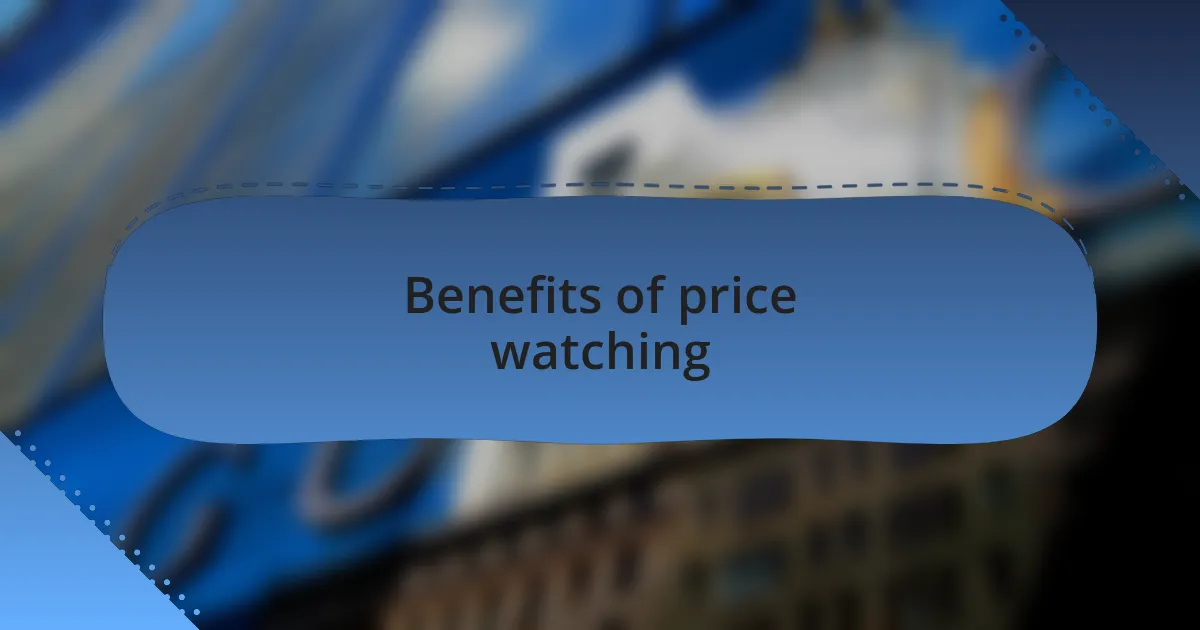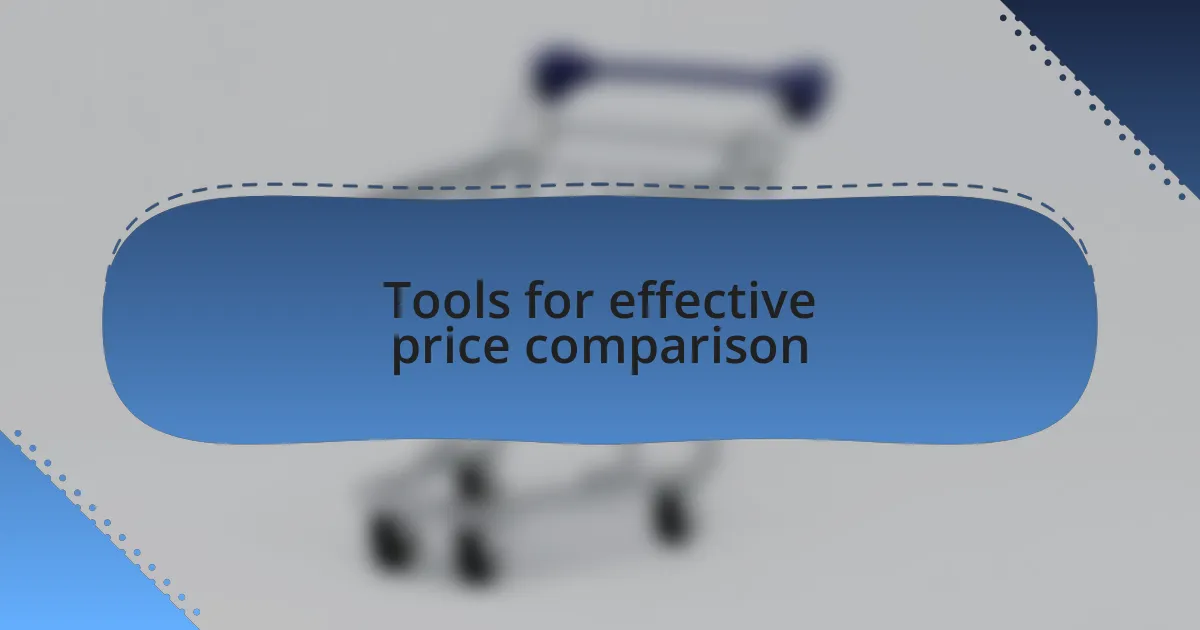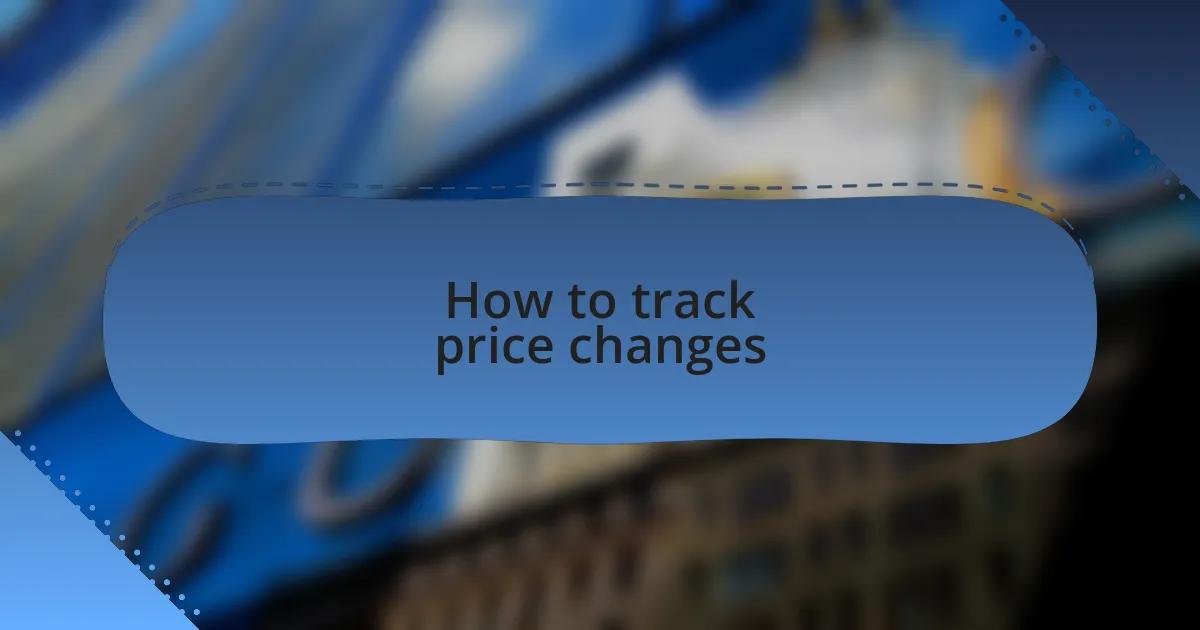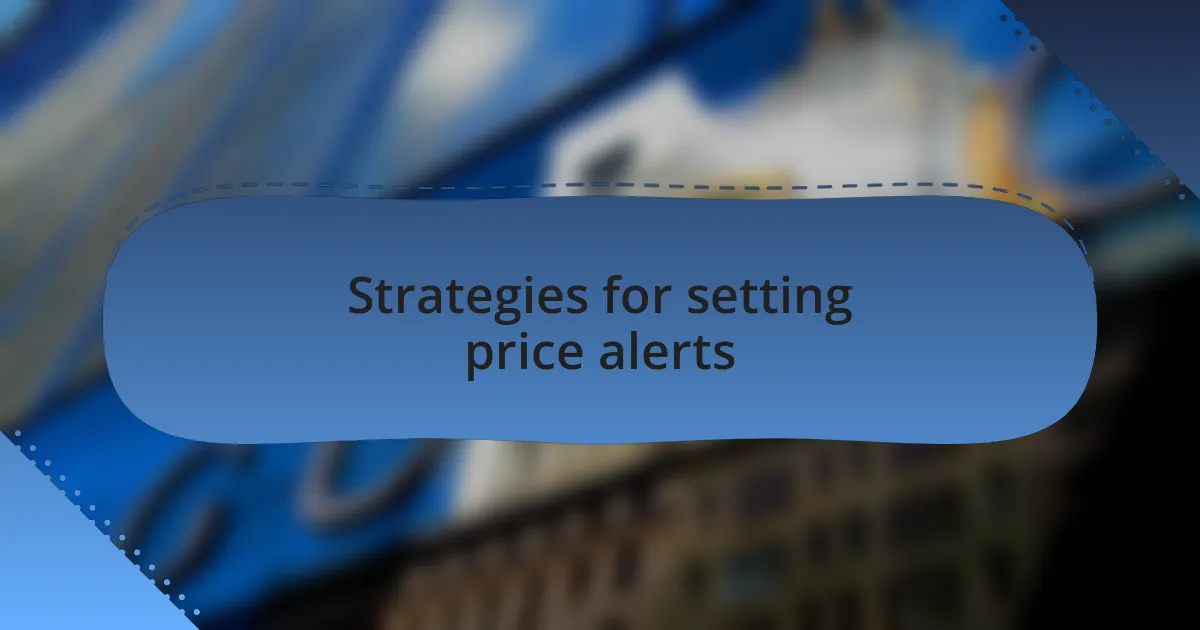Key takeaways:
- Price comparison is essential for making informed shopping decisions and can lead to significant savings over time.
- Using tools like price tracking websites, browser extensions, and mobile apps enhances the effectiveness of price watching.
- Setting alerts and tracking price changes through various methods can help consumers snag better deals while avoiding impulse purchases.
- Establishing a personal price-watching routine and creating a wishlist can streamline the shopping experience and lead to better budgeting.

Introduction to price comparison
Price comparison isn’t just a smart shopping strategy; it’s essential in today’s fast-paced market. I remember the time I discovered a significant price difference between two online retailers for the same gadget. That moment sparked my interest in price comparison tools; wouldn’t it be great if everyone could save money like that?
The simple act of comparing prices can feel overwhelming at times. I often ask myself, what if I miss a better deal? This uncertainty fueled my desire to find effective ways to track prices consistently. With so many options available, understanding how to navigate these tools can make a world of difference in getting the best value for my hard-earned money.
By dissecting prices across various platforms, I’ve learned that even small differences can add up over time. I recall a situation where I saved enough from one product to treat myself to something special. That experience taught me the importance of being vigilant and proactive in my shopping habits, turning the sometimes tedious task of price comparison into a rewarding ritual.

Benefits of price watching
When I started price watching regularly, I was surprised by how much I could save. For instance, I once targeted a pair of running shoes that I wanted. After tracking their price fluctuations over a couple of weeks, I snagged them during a flash sale, saving nearly 30 percent. It felt like a little victory, reaffirming why I dove into this habit in the first place.
One notable benefit is the peace of mind that comes from knowing you’re making informed decisions. I’ve had moments when I hesitated before purchasing something at full price, only to find it dropped days later. In those instances, I couldn’t help but think, how many times have I paid too much just out of impatience? Price watching eradicates that anxiety, allowing me to shop with confidence.
Moreover, keeping an eye on prices can help me spot trends and seasons better. I’ve noticed that certain products dip in price during specific times of the year, like electronics around Black Friday or summer sales for outdoor gear. This insight not only makes my shopping more strategic but also sparks a sense of excitement about planning ahead rather than reacting in the moment. Isn’t it amazing how being proactive about spending can turn shopping into a well-thought-out adventure?

Tools for effective price comparison
There are several tools I’ve found invaluable for effective price comparison. Price tracking websites have become my best friends; they provide historical data on price changes, allowing me to see trends over time. When I recently used one to monitor a smart TV, I was shocked to see how prices fluctuated dramatically during sales events. You start to wonder, are we really getting good deals, or is it just clever marketing?
Another tool worth mentioning is browser extensions designed for price alerts. I’ve installed a couple that notify me whenever a product I’m watching drops in price. Just last month, I received an alert on those running shoes I had my eye on. The moment I got the notification, I felt that rush of excitement—like I was part of a secret club that knew when to swoop in for the best deal.
Mobile apps are also a game-changer. I remember standing in a store, phone in hand, comparing prices in real-time. It felt empowering to see that the item was significantly cheaper online. In those moments, I couldn’t help but think about how often I might have overpaid without this tool at my fingertips. It’s like shopping with a sixth sense, making you feel both savvy and informed.

How to track price changes
When it comes to tracking price changes, I often rely on setting up alerts through various websites. Just last week, I found a great deal on a kitchen gadget, but instead of rushing to buy it, I set an alert. When the price dropped further a few days later, I couldn’t help but feel like a savvy shopper who beat the system.
Another method I use involves taking selfies of price tags whenever I’m out shopping. It might sound quirky, but those photos act as a mini archive. I’ve compared the images to online prices later and realized just how much I can save. Has anyone else tried this? It’s an odd habit but surprisingly effective!
Lastly, I keep a simple Excel spreadsheet that tracks my favorite products and their prices over time. While it requires a bit of effort initially, it gives me insights into buying patterns. The feeling of watching prices dip—and knowing exactly when to pull the trigger—makes the process feel like a fun game. It’s gratifying to see the data translate into real savings!

Strategies for setting price alerts
One effective strategy I employ is to leverage multiple platforms for setting price alerts. For instance, I’ve signed up for notifications on both retail websites and third-party price comparison apps. This redundancy ensures that I won’t miss a deal, even if one platform experiences delays. Have you ever missed a great deal because you weren’t notified in time? I know I have, which is why diversifying my sources feels like a safety net.
Another tactic that’s proven invaluable is to clearly define my desired price points before setting alerts. When I wanted to snag a high-end camera, I calculated the maximum I was willing to spend. By setting my alert to trigger only when it fell below that threshold, I avoided impulse buying and played it smart. It’s empowering to see how knowing exactly what you want can filter out distractions and keep your focus sharp.
I also find it helpful to adjust my alerts based on seasonal trends. For example, I start monitoring prices for outdoor gear as spring approaches, anticipating price drops as retailers clear out inventory. This strategy not only preps me for the best deals but also adds a layer of excitement as the season changes. Don’t you love that feeling of being ahead of the game? It’s like having an insider’s edge in the world of shopping.

My personal price watching routine
When it comes to my personal price-watching routine, I start each day by checking my favorite retailers and price comparison websites. I have a dedicated time in the morning, often with my coffee in hand, where I browse through my alerts. This ritual grounds me in my shopping goals and allows me to strike while the iron is hot. Have you ever felt that rush when you spot a price drop that you’ve been waiting for? I thrive on that adrenaline.
I also like to take a step back and analyze historical pricing trends. For example, before purchasing a new laptop last year, I spent a few nights looking at historical prices to see when it typically dropped. Discovering that prices usually dip during back-to-school season not only saved me money but also eliminated the anxiety of rushing into a purchase. It’s fascinating how knowledge transforms the process, turning it from a chore into an engaging hunt for value.
Lastly, I often create a wishlist tailored to my priorities. A few months back, I compiled a list of items I was eyeing, from kitchen gadgets to tech toys. This way, I can easily assess what is essential versus what can wait. It’s a balancing act that keeps me motivated—knowing I can reward myself with the best deals without stretching my budget. Have you tried the wishlist approach? It can be a game-changer in price-watching!